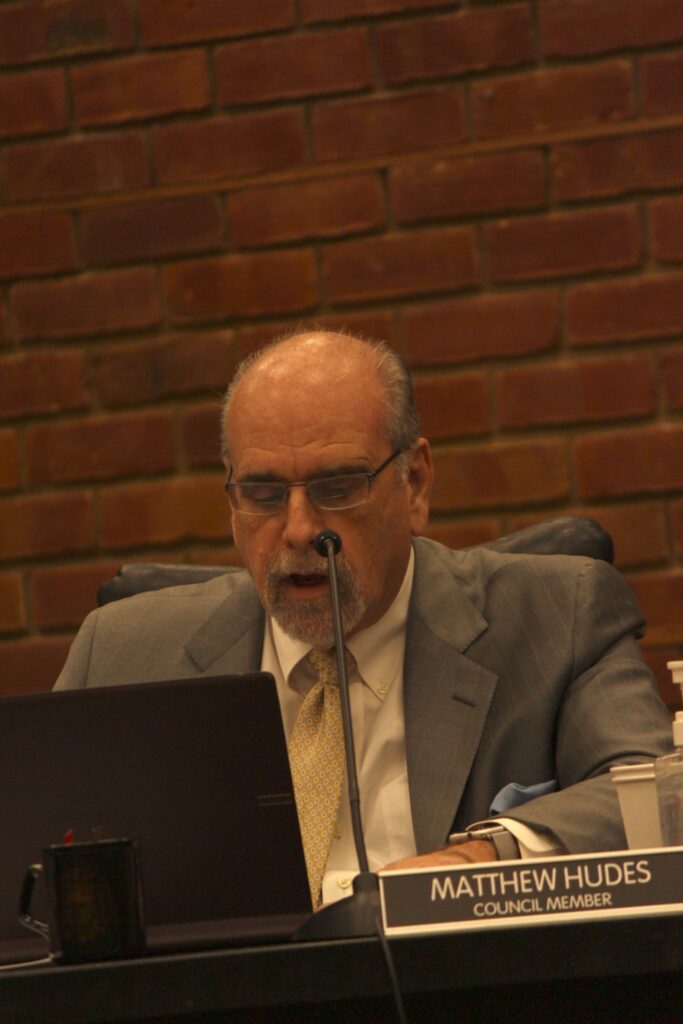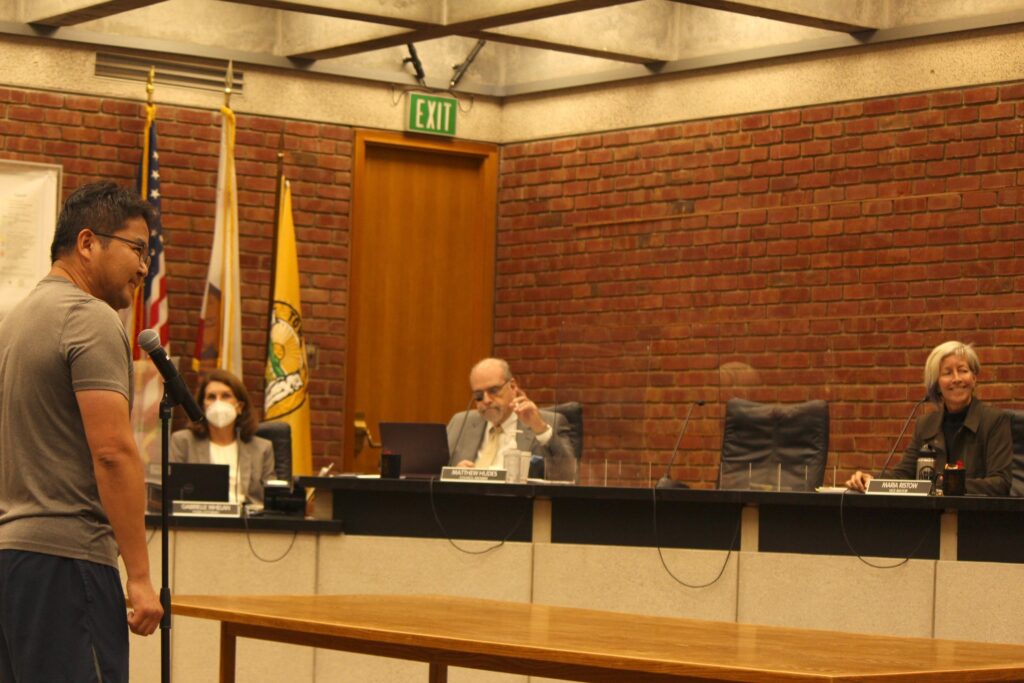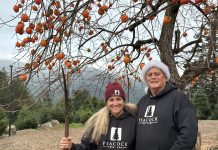Los Gatos’ first in-person Council meeting in a year brought out a full house on Oct. 18, as members debated what to do about a referendum brought by a group concerned with an increasing pace of residential development.
While there was disagreement over how to proceed—with plenty of citizens frustrated with efforts to densify the community sharing their public comments—in the end, the elected officials unanimously decided to punt a decision about the plebiscite to at least next year.
The 2040 General Plan’s Land Use and Community Design elements were suspended when the Los Gatos Community Alliance gathered signatures from more than 10% of the electorate in their drive to have those chapters tossed out completely.

In their place, Council has temporarily reinstated the elements from the 2020 General Plan, but needed to figure out how to handle the referendum.
They had three options:
- A standalone special election that would cost $900,000-$1 million ($600,000-700,000 for mail-in only); this could be completed at some point in 2023.
- Place the measure on the Nov. 5, 2024 general election, costing about $145,000.
- Rescind the elements in question and replace them with updated ones.
Town Attorney Gabrielle Whelan said if Los Gatos wants to replace these two elements, the new versions would have to be substantially different from initial ones.

Vice Mayor Maria Ristow said she was mystified about why the referendum proponents opposed the Community Design Element, since it doesn’t seem to have much control over development; the 2020 version now in place is quite outdated, she added.
Mayor Rob Rennie, who is currently standing for reelection against candidates supported by the LGCA, asked staff for clarification about some of the main factoids being circulated by the group.
“Could we talk a little bit about the numbers?” he began, referencing the supposed 12,000 potential housing units figure in LGCA materials.
Community Development Director Joel Paulson confirmed that the state mandate plus a 15% buffer is only 2,292 for the State’s upcoming eight-year residential-planning cycle.

He said the LGCA’s 12,000-unit number was apparently based on imagining every single parcel would be able to be built out to the maximum density allowed—and that developers would choose to construct as much housing as possible in every single one of these areas.
A more accurate estimation for the entire 20-year period would be less than 4,000 units, he added, confirming this was based on development rate assumptions selected by a consultant (of about 5-15%).
Councilmember Matthew Hudes said much of the housing construction that might happen in the coming years could be “by right” development that the Town doesn’t control.
On a question from Councilmember Marico Sayoc—who opted not to seek reelection in November—Paulson confirmed just 619 homes have been built in the current Regional Housing Needs Assessment period under the 2020 General Plan.
“We now have to build 2,000 in the next eight years,” she said, suggesting that could be unrealistic, considering the old system is now back in-place.
Councilmember Mary Badame, one of the names on the ballot supported by the LGCA, argued that the 5%-15% redevelopment rate was just “the opinion of one consultant,” and could be way higher.
Dressed in a National Rifle Association T-shirt, Ronald Meyer, a Los Gatos resident since 1988, took to the microphone during verbal communications to raise concerns with the General Plan process.
He said he thinks the community needs to be able to vote on the residential development portions of the plan, as part of ensuring private property rights are protected.

“When are we going to see the plan?” he asked. “I would like to see more transparency.”
Ristow confirmed with staff that the public documents are currently online.
Meyer said he had trouble finding them on the website.
The mayor directed staff to follow-up with Meyer by email.
Diana Pleasant, another local resident, said she understands what is happening is that Sacramento doesn’t want to allow Los Gatos to be a tiny community anymore.
She urged council to put the phrase “small town” back into a section of the General Plan from which it was eliminated.
In his public comments, Rob Stump, another Council candidate supported by the LGCA, claimed the 2040 General Plan would actually usher in “more than 12,000” units.
“What I’m recommending is that the Town Council rescind and replace,” he said.
Jason Xu, a father of two, had learned the topic would be coming to Council via a message from Hudes the day before.

He was out jogging nearby when he noticed, through YouTube, that the meeting had begun.
“Why don’t I come in, instead of watching the video?” he thought to himself.
So he did.
“Good evening Council members. So, I was actually a new member of the town,” he said by way of introduction, referring to his recent move from San Jose. “One keyword that I heard repeatedly is ‘small town’ again and again. I loved that…This is a number one issue to decide my vote, my wife’s vote.”

Afterwards, in an interview with the Los Gatan, Xu explained he’s generally happy with the services available to Los Gatos residents—such as policing, and fire protection.
“We really love downtown Los Gatos and the schools,” he said. “But I think, at this moment in this town, the high density development is the number one issue that I can see.”
Like so many in the community, he’s worried additional residential housing production could threaten the “character” of the community.

Melanie Hanssen, the chair of the Planning Commission, which had recommended higher density rates in some areas that ultimately made it into the 2040 General Plan, said at this point she believes the right move would be Option 3, to scrap the initial 2040 General Plan elements in dispute.
That’s because she’s concerned voters could be bombarded with misinformation ahead of a referendum.
“Maybe there’s a creative solution,” she commented over Zoom, contending the 2020 density levels won’t be enough to reach the bar set through the California Department of Housing and Community Development process.
Council heard it might make more sense to wait to hear back from HCD on the draft Housing Element, which was submitted Oct. 14.
The agency has 90 days to respond, but may give Los Gatos clues about which way it’s leaning, sooner.
Because the 2020 General Plan rules are now active again, Council members felt it made more sense to push a decision about the referendum off after that happens—when their own ranks could look quite different (depending on what happens in the election).
The LGCA argues the Town should just reverse-engineer the 2040 General Plan’s housing provisions once HCD tips its hat about the minimum amount Los Gatos will have to plan for.










